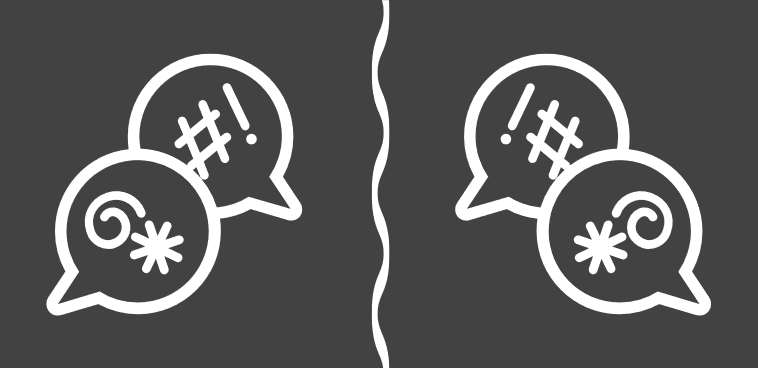Many people are developing new habits during this unusual time. Mine is yelling at my car’s dashboard.
It’s not the dashboard that’s setting me off, or even the traffic I see over it (there’s not a lot of traffic these days). It’s actually the podcasts emanating out of my dashboard that are causing me increasing fits. Ever since human interaction has been curtailed due to the lockdown, I’ve been interacting with podcasters more. Or, I should say, not interacting with them, which is my problem.
As I listen to my favorite hosts opining about everything from sports to business to politics, a feeling of frustration is increasingly creeping over me. It’s odd, because these are people with whom I don’t always agree but for the most part respect. In a recent case, a particular host said something that I didn’t think was exactly right, and it got under my skin in a noticeable way.
Had we been colleagues conversing over a meal, I might have given him a look of confusion or asked him to clarify, and that would have been that. But we weren’t conversing over a meal — we weren’t even conversing — which gave me no other outlet but to talk to my car.
It was not a good look. Or a good sign, because I’m afraid it’s happening to more of us, more often. One of the unintended, unanticipated side effects of quarantining is that we’re using fewer faculties to communicate.
Consider how a disagreement normally works. We have available to us all the tools of good communication: two-way conversation, time to volley back and forth, five senses through which we can take in nonverbal cues such as tone of voice, pitch and volume, facial expressions, eye contact (or the lack of it), gestures and even touch.
We unconsciously leverage every one of these tools as we navigate through conflict towards communication and ultimately to some level of understanding. That’s how full-orbed human interaction works.
But take it back a notch to, say, watching television or sitting in an auditorium listening to a speaker. The communication is now one-way, not two. There is some time to soak in what’s being said, so you are able to pick up additional clues that may help fit an off-putting remark into a larger context. You’re also still able to take in a fair number of nonverbal cues, although your senses are limited to sight and sound. It’s a significant step short of full communication.
Now dial it back even further to the podcast example. It’s one-way. It typically transpires over several minutes or an hour, but nonverbal cues are limited to a single sense. You try to distinguish the sharp-tongued versus tongue-in-cheek comment, and you listen for other clues that will help you put into context what you’re hearing. But being spoken to rather than with makes it difficult to interpret anything with certainty — other than the bad take you think you just heard.
You can see where this is going — all the way to the sewer that is social media. It’s full of one-way, instantaneous, character-limited (sometimes character-assassinating) declarations that are often fired off with little context and even less nuance.
I have regularly been unintentionally put off on Twitter by people I know and love, let alone people I don’t know and whom I follow for reasons other than affection. I have a rule not to respond in kind, especially when something stirs a negative emotion, which these days I think is wiser than ever. But still, it’s wearying.
It’s tragic that people are losing loved ones, being laid off from their jobs, shuttering their businesses, missing cancer screenings, or delaying going to the ER with the early signs of a heart attack or stroke due to the virus and its effects. But the shutdown is also shutting down our ability to effectively communicate, which has serious consequences of its own. And until recently, I wasn’t even conscious that it was happening.
But now I am, and you are, too. As fallen human beings, we need all the help we can get to understand and be understood — all of our senses, all the time we can get to explore ideas, all of the back-and-forth that enables clarification and overcomes miscommunication.
When any of those things is delayed or denied, relationships suffer at work as well as at home. As leaders, it’s our responsibility to overcome obstacles, and this is one that can trip up any team. But to address it we first must be aware of it, and now that I am I know what to do.
Social media, blogs, and podcasts can be fun and tasty, if consumed in moderation. But during this extended period in which we’re being denied full-course communication, we must be careful they don’t become the whole of our diet. Otherwise our relationships will be so starved for nutrition that we’ll all be yelling at our dashboards — or worse.
Each month, When Growth Stalls examines why businesses and brands struggle and how they can overcome their obstacles and resume growth. Steve McKee is the co-founder of McKee Wallwork + Co., a marketing advisory firm that specializes in turning around stalled, stuck and stale companies. The company was recognized by Advertising Age as 2015 and 2018 as Southwest Small Agency of the Year. McKee is also the author of “When Growth Stalls” and “Power Branding.”
SmartBrief offers more than 200 free newsletters, including SmartBrief on Leadership and Business Transformation SmartBrief.
